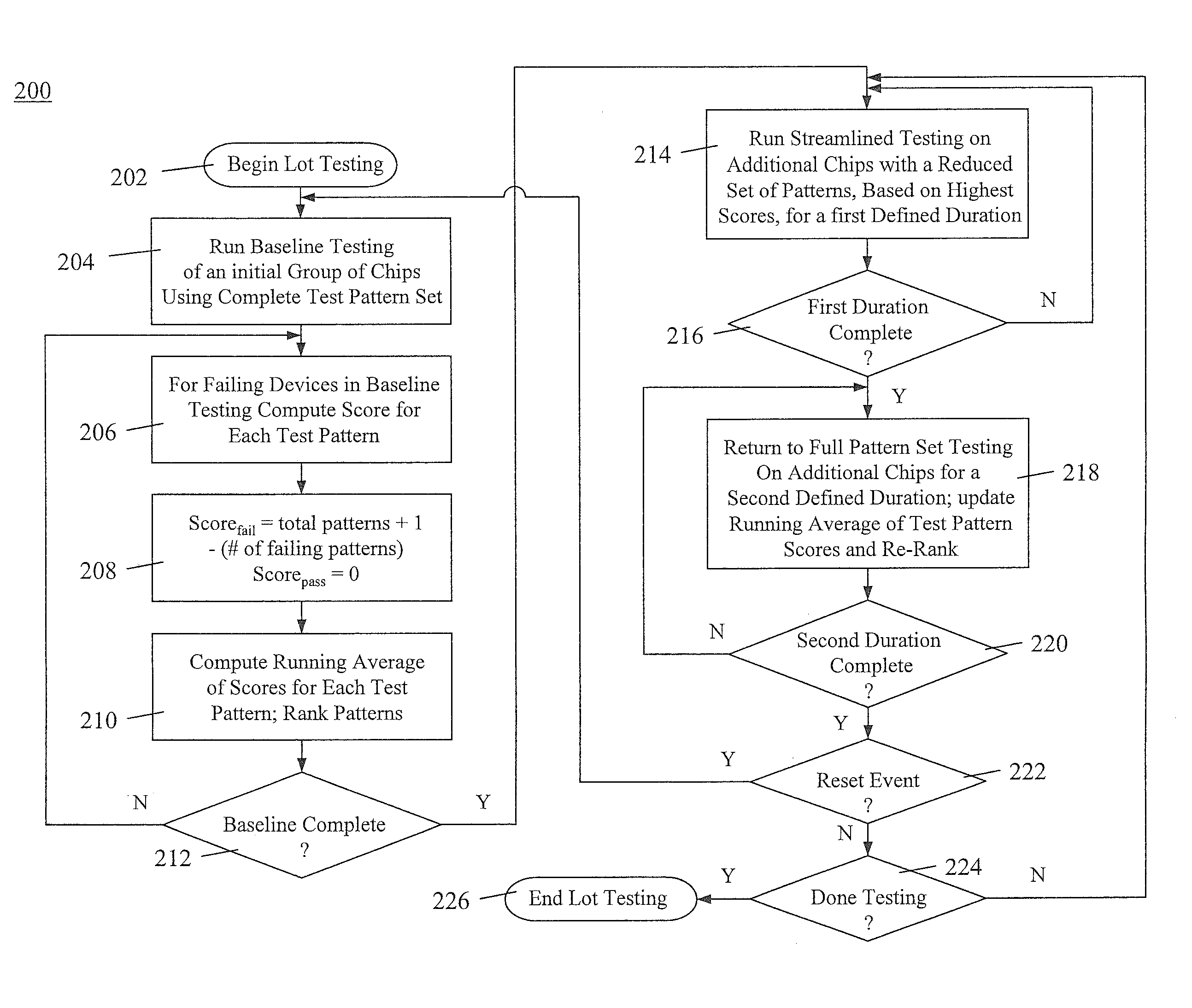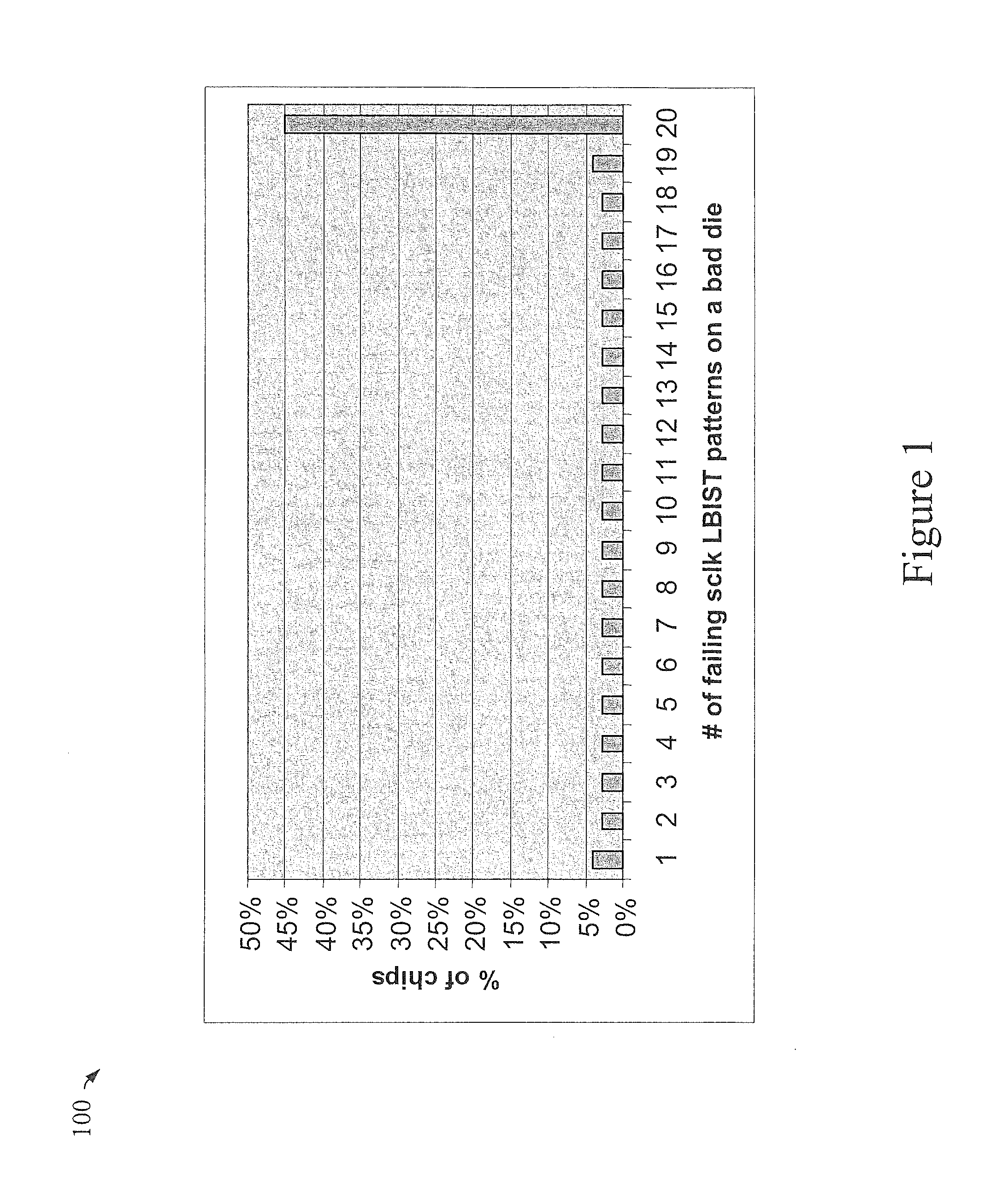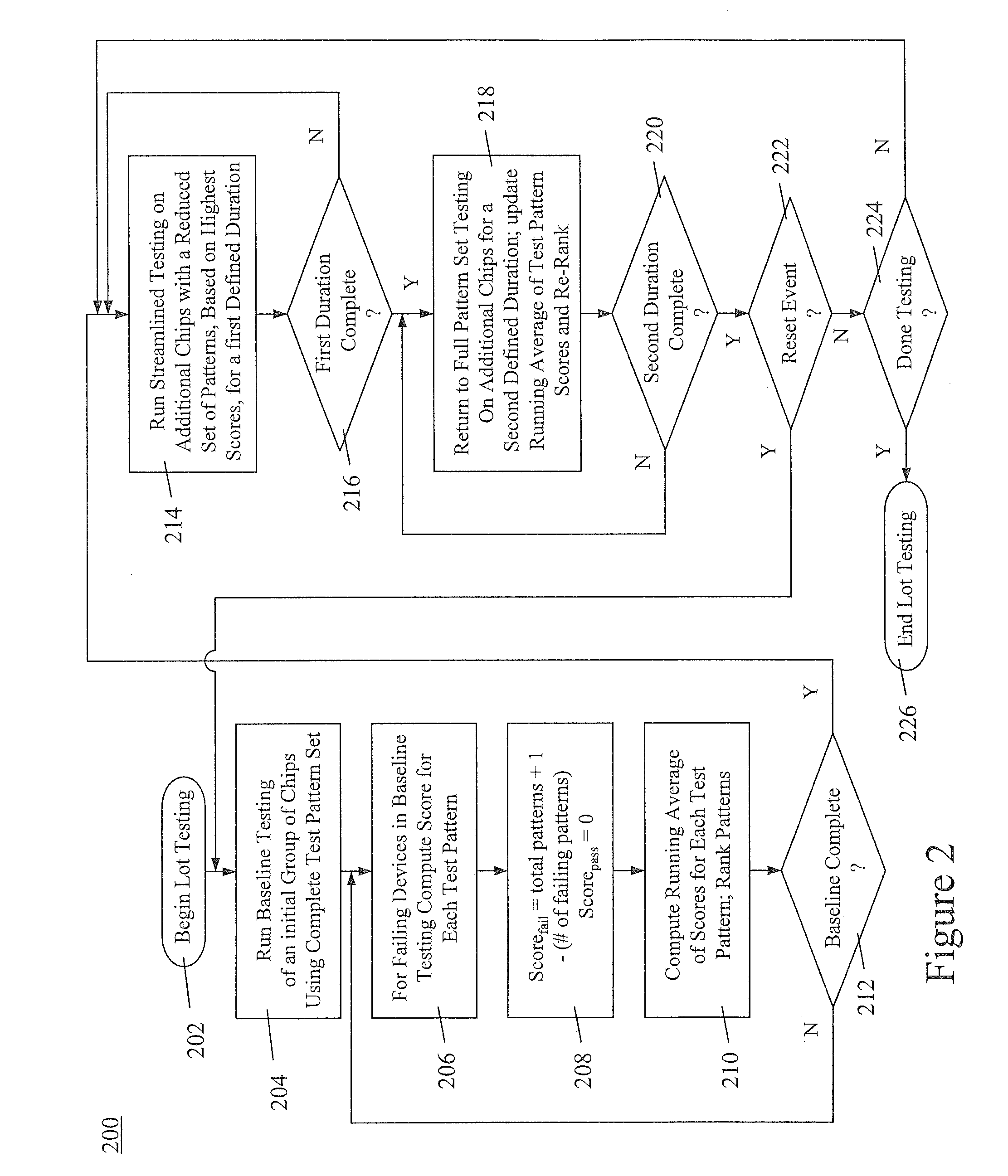Integrated circuit test optimization using adaptive test pattern sampling algorithm
a technology of integrated circuit and sampling algorithm, which is applied in the direction of error detection/correction, instruments, computing, etc., can solve the problems of complex and expensive process of device testing in a manufacturing environment, wide range of faults of devices, and inevitable defects of semiconductor manufacturing
- Summary
- Abstract
- Description
- Claims
- Application Information
AI Technical Summary
Benefits of technology
Problems solved by technology
Method used
Image
Examples
Embodiment Construction
[0012]As indicated above, integrated circuit devices are subjected to large numbers (e.g., hundreds or even thousands) of test patterns in order to ensure defect detection. This is the case, even though it is generally recognized in the semiconductor industry that most defective devices can be caused to fail with many fewer tests than are typically run in a testing process. It is also well recognized that most of the time used to test digital integrated circuits is made up of the running of functional tests. However, the main problem in this regard is that it is not known ahead of time which ones of the available functional tests are going to catch a defective device. Therefore, IC manufacturers typically run all the tests available, and therefore much test time is wasted. Efforts may be made to look at historical pass / fail information with respect to functional test fails, followed by reducing the pattern list, but such a process is iterative and backward looking.
[0013]Pattern rank...
PUM
 Login to View More
Login to View More Abstract
Description
Claims
Application Information
 Login to View More
Login to View More - R&D
- Intellectual Property
- Life Sciences
- Materials
- Tech Scout
- Unparalleled Data Quality
- Higher Quality Content
- 60% Fewer Hallucinations
Browse by: Latest US Patents, China's latest patents, Technical Efficacy Thesaurus, Application Domain, Technology Topic, Popular Technical Reports.
© 2025 PatSnap. All rights reserved.Legal|Privacy policy|Modern Slavery Act Transparency Statement|Sitemap|About US| Contact US: help@patsnap.com



